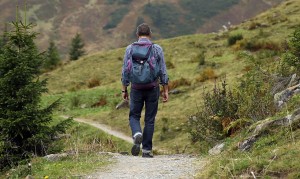When it comes to hiking in Colorado, it’s important to make sure you are prepared for any of the elements to come your way. Take the time to familiarize yourself with the surroundings of where you will be hiking and the obstacles and the risks you may face. Below are a few helpful safety tips for hiking in Colorado.
First and foremost, don’t hike alone and inform a trustworthy friend or family member about your plans for the day. Tell them where you will be going and what time you plan on returning. There are a lot of locations in the mountains without decent cell service, so if they don’t hear from you by the designated time, then at least you will have someone to inform the authorities / rescue crews. It’s not a bad idea to also check-in with the local park / forest ranger.

It is really important to get started early. Colorado boasts 300 days of sunshine, but afternoon lightning storms are fairly common in the summer. You don’t want to be on the peak or above the tree line when storm clouds roll in. Lightning is extremely dangerous to hikers in the summer, so avoid it all together with an early start so you are on your way back down when any extreme weather hits.
The day of your hike, you should look up the local weather report. Then use the information wisely! It is common during mud season for melting snow to disturb the ground on steeper slopes leading to falling rocks and mudslides. The threat is even greater when the forecast calls for torrential rain or extreme heat, so simply reschedule your hike.
In general, the climate in Colorado is dynamic, so be sure to wear many layers. One moment you could be sweating beneath the high altitude sun and at risk of heat exhaustion. Within the blink of an eye, there can be a sudden temperature drop and the threat of becoming hypothermic. Even a tiny injury can become life threatening if not given the proper attention. Before your excursion, find out the nearest location for medical help and pack a first aid kit.

It is also wise to be proactive pertaining to run-ins with wildlife. The day of your hike, check-in with the local park / forest ranger for an up-to-date report on animal sightings within the area. I cannot emphasize this concept enough, especially if you are on trail with small children or you dog. It is one thing to run into a moose, ram, bear, snake, or even a mountain lion on your own, but the situation can easily escalate if a running child triggers an animals play-drive or your dog gets too close, causing a confrontation. While a run-in with wildlife can be scary for hikers, avoid catching an animal by surprise. Make your presence known by speaking loudly or even clapping sticks together.
If you take away any advice from this blog, I hope that it is to research where you will be hiking. ‘Knowledge is power’ and when it comes to the backcountry, it can also be the difference between an exciting adventure or a life and death situation!
For more safety tips, check out Rocky Mountain Hiking Trails.



 TWITTER
TWITTER
